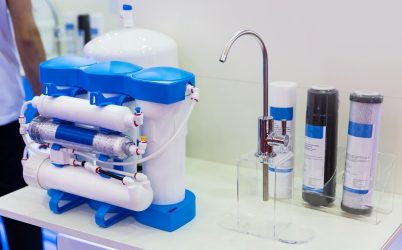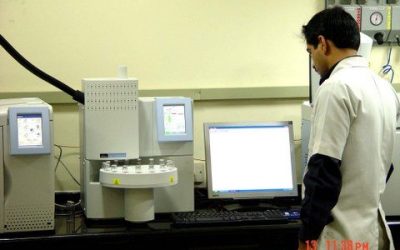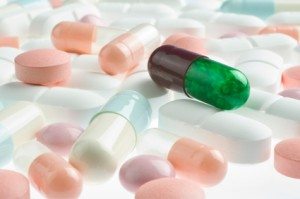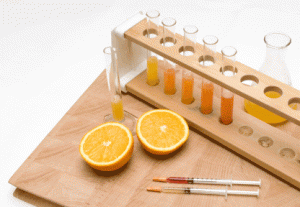Franz Diffusion; A revolution in Transdermal Drug Delivery System
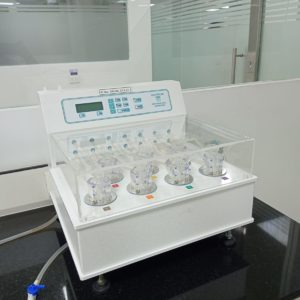
History manifests that human civilizations have applied substances to the skin as cosmetic and medicinal agents. With the advent of the 20th century, the skin came to be used as a drug delivery route.
Franz diffusion cells evaluate in terms of permeability and stability of the products. Remarkably, the method for in vitro transdermal diffusion was developed by T.J. Franz in 1975 . His report suggests that there had been no previous systematic research into the relation between in vivo, in vitro transdermal absorption.
Evaluation of dermal or transdermal drug delivery system
- In evaluation of any dermal or transdermal drug delivery system the assessment of percutaneous absorption of molecules is an indispensable step.
- It is important to ensure that the methods are standardized and the integrity of the skin is monitored and maintained. This will increase the authenticity and relevance of the data obtained in order to perform percutaneous drug absorption studies.
- Formulation studies are essential for efficacy, reliability in approved drugs as well as new pharmaceutical formulations.
- Simple methods must be implemented for determining the main physicochemical parameters including solubility, partition coefficient and dissolution profiles.
- In the case of topical formulations, for which the drug is released through the skin, evaluation of the permeation is critical to establish bioavailability and thereby make an approximation of the effectiveness.
Franz diffusion cell and its role in drug formulation
- Franz Diffusion Cells is a jacketed Franz Cell with a 9mm orifice diameter, flat ground joint, and 5ml receptor volume. It is the de facto standard for working with human skin and may be used with any membrane 4mm or less in thickness.
- In order to protect the functional properties of the active skincare ingredients we use vertical diffusion cells, known as Franz cells, as an in vitro model for transdermal absorption and permeation.
- Franz diffusion cell experiments can be designed to model skin environment, regarding pH, temperature, solutions etc. The substance permeation is tested over a membrane – from simpler dialysis membranes to synthetic skin substitutes or real skin biopsies.
- Limitations of active ingredient use lie in stability issues of the substances, associated with physical and chemical In case of a mesoporous material, the loading of a compound into the small pores may limit substance crystallization and thus increase their bioavailability.
- It avoids additional performance tests once the product is ready for market.
Importance of Franz Diffusion
- The Franz diffusion cell to assess skin permeability has evolved into a major research methodology.
- It provided key insights into the relationships between skin, drug and formulation.
- This testing is significant in the design and development of novel formulations.
- It also helps in toxicity screening and quality control. Franz diffusion cells are normally used with excised human or animal skin. However, when biological skin is not readily available, synthetic membranes are employed.
- The synthetic membranes employed in Franz cell drug diffusion studies have two pivotal functions; simulation of the skin and quality control.
- The drug administration via skin for local therapeutic effects on diseased skin (topical delivery) as well as for systemic delivery(transdermal delivery). The permeation of chemicals through the skin can be measured by in vivo and in vitro techniques.
Use of Synthetic Membrane in Franz Diffusion Cell
- Polymethylsiloxane (PDMS) is an example of a synthetic membrane that is often employed to simulate the skin because it is hydrophobic and possesses rate-limiting properties like skin .
- Synthetic membranes for quality control should have minimum diffusion resistance to drugs and only act as a support to separate the formulation from the receptor medium .
- The synthetic membrane should be a ‘continuous’ medium of the receptor media. Such synthetic membranes often contain pores, henceforth termed ‘porous membranes’.
A Glimpse at the Method
The Franz diffusion cells consist of a donor chamber and a receptor chamber, separated by a membrane – e.g., skin or a skin equivalent. Sample introduction is done at the top, in the donor compartment. In a flow diffusion cell, the receptor medium is circulated at the bottom from which samples are extracted for analysis over a time interval.In acceptor compartment we place the release media
Acceptor compartment and donor compartment are joined together before which we place release membrane This release membrane can be dialysis membrane Franz cells for assessment of transdermal diffusion The Franz diffusion cells consist of a donor chamber and a receptor chamber, separated by a membrane – e.g., skin or a skin equivalent. Sample introduction is done at the top, in the donor compartment . In a flow diffusion cell, the receptor medium is circulated at the bottom from which samples are extracted for analysis over a time interval
In vitro skin permeation studies of topical formulations
- The vertical franz diffusion cell is a simple reproducible test for measuring the in vitro drug release from creams , ointments and gels
- The transdermal diffusion cell apparatus is remarkably simple to operate the system is supplied with;
- Six stage magnetic stirrer with digital RPM indicator.
- Water heater and water circulation system with digital temperature controller and water level indicator.
- Cell holders
- Diffusion cells
- Teflon coated stirring bars
Features of Franz Diffusion Apparatus
- Highly accurate stirring speed and temperature controller
- Precise speed control over stirring range 200-800rpm using digital speed indicator and controller
- Digital temperature controller for precise temperature control.
- Water circulation system with water level sensors to avoid damage to heating elements.
- Magnetic stirrer with stain;less steel body to avoid corrosion.
- Sturdy, heavy duty magnetic stirrers- allowing continuous and non stop operation.
What is the usage of Franz Diffusion Apparatus ?
- It is used for studying blood release products like transdermal products, semi solids, emulsions and suspensions and it can also be used for nano formulations.
- Diffusion cells are individually hand blown cells made of two borosilicate glass components. The upper part may be called the cell cap, cell top, donor chamber or donor compartment. The lower portion is generally called the body of the cell,It is also referred at times as receptor chamber but in the case of jacketed cells
- The apparatus consist of two major parts the acceptor compartment and the donor compartment
- The acceptor compartment consists of a jacketed vessel which consists of an inlet and outlet through which we will be circulating hot water for maintaining constant temperature.
- The Franz Cell chamber is an in vitro skin permeation assay frequently used in formulation development.
- The Franz Cell apparatus consists of two primary chambers separated by a membrane. Although animal skin can be used as the membrane, human skin is preferred. The test product is applied to the membrane via the top chamber. The bottom chamber contains fluid from which samples are taken at regular intervals for analysis. This testing determines the amount of active that has permeated the membrane at each time point. The chamber is maintained at a constant temperature of 37O C. Depending on the vehicle, the rate of permeation for a given drug as determined via Franz cell analysis can vary significantly (perhaps from 10- to 50-fold).
Franz Diffusion at Auriga Research Laboratory
Our laboratories in pan India locations are well equipped with avant garde equipment. We carry out pharmaceutical studies with franz diffusion cells to maintain the accuracy, efficacy and evaluate in vitro drug permeation. We test for creams, gels, lotions, shampoos and ointments using Franz Cell Technology. Lotions and shampoos are less viscous than creams and gels and can be tested using similar technique with careful selection of artificial support membranes.
For any query related to the Franz Diffusion you can Contact us or fill out our Quick Query Form Or drop an e-mail to [email protected]



